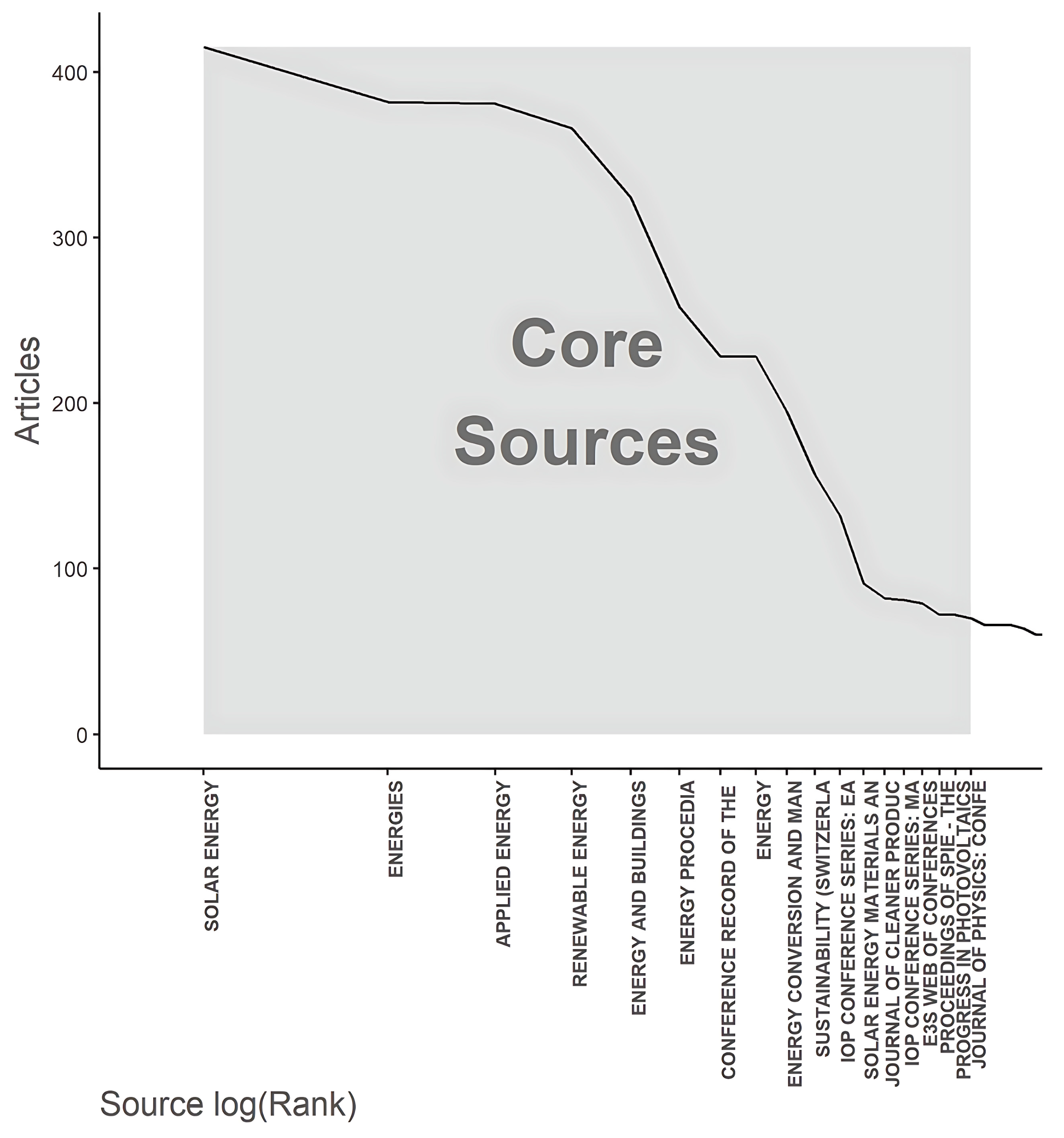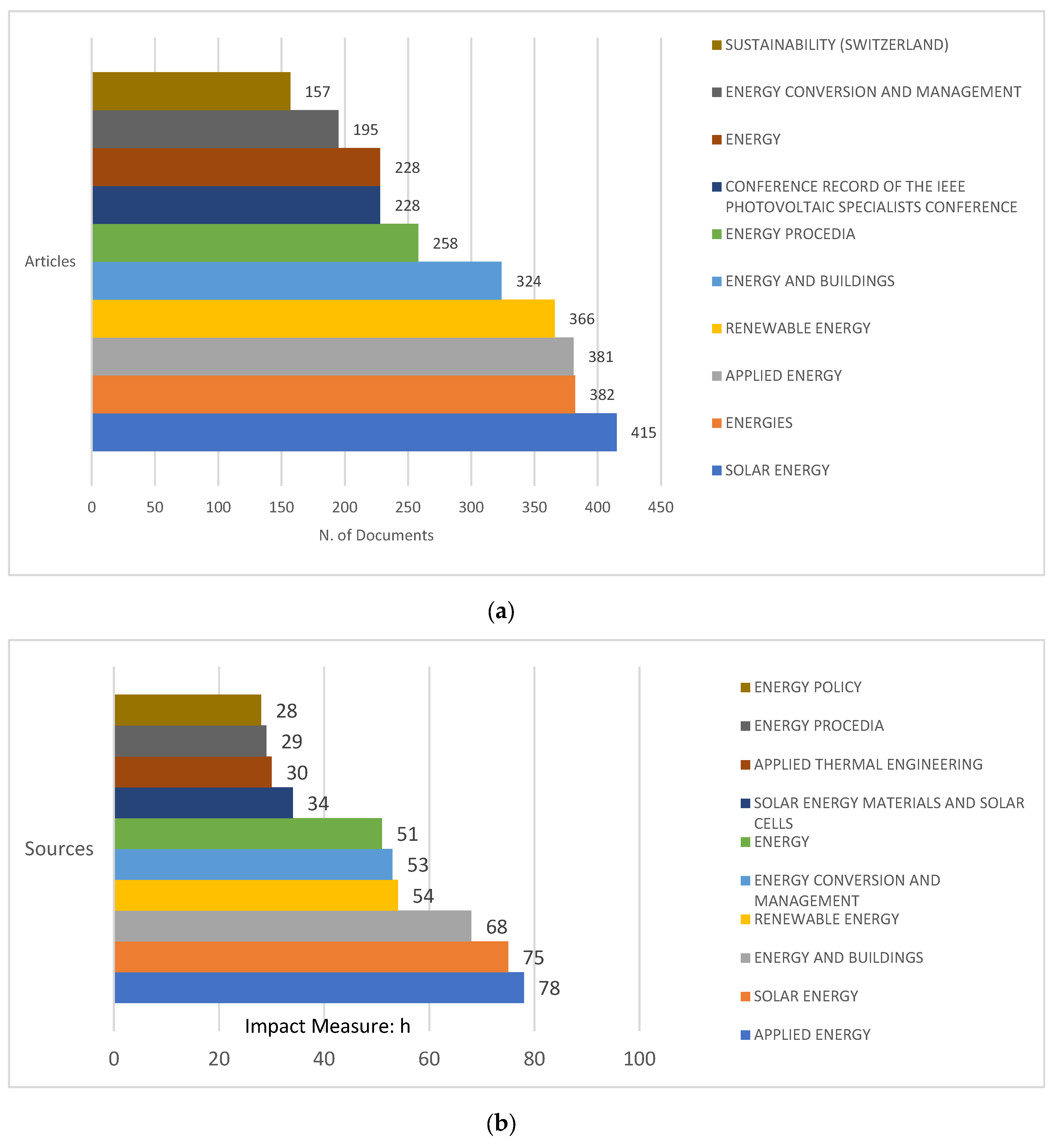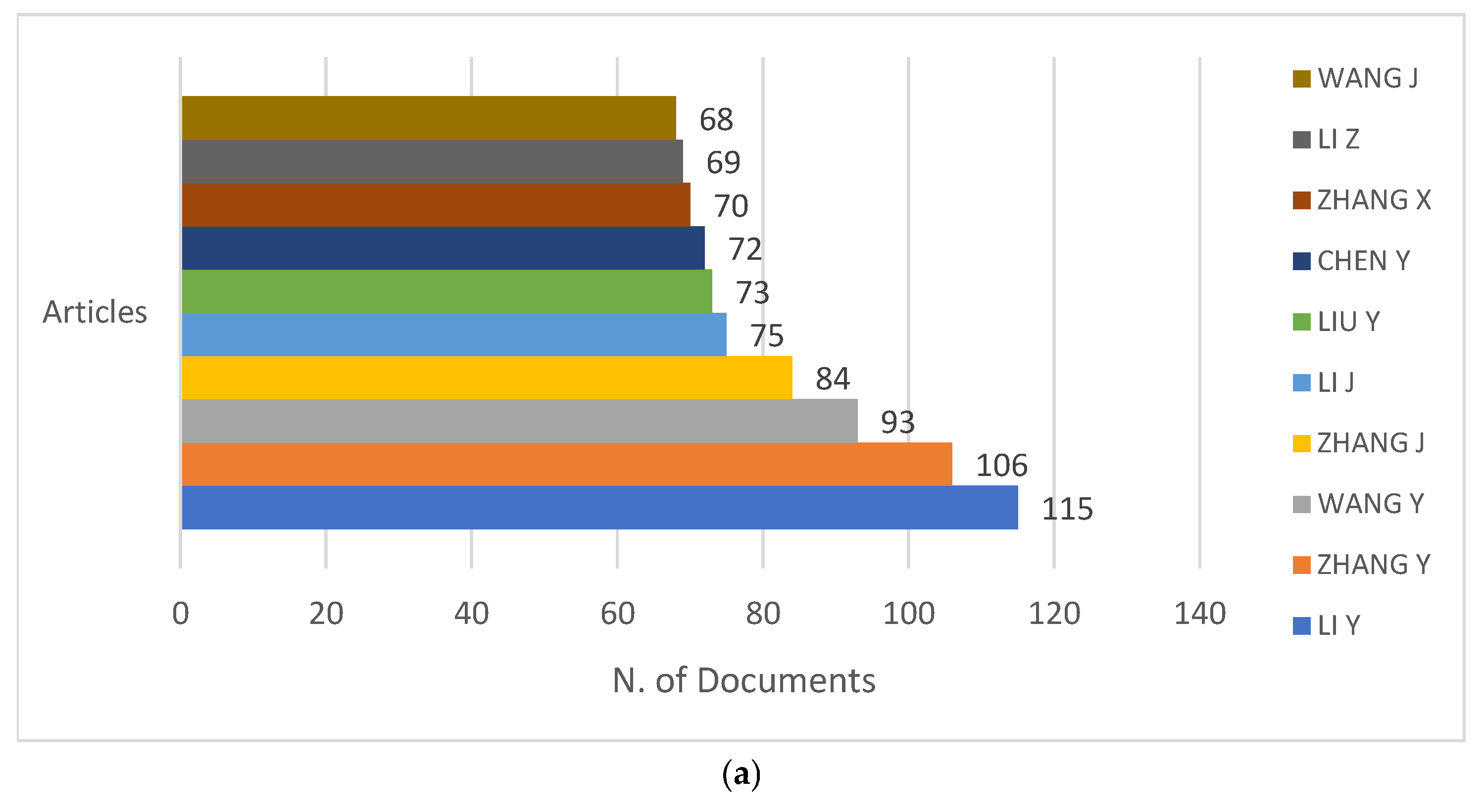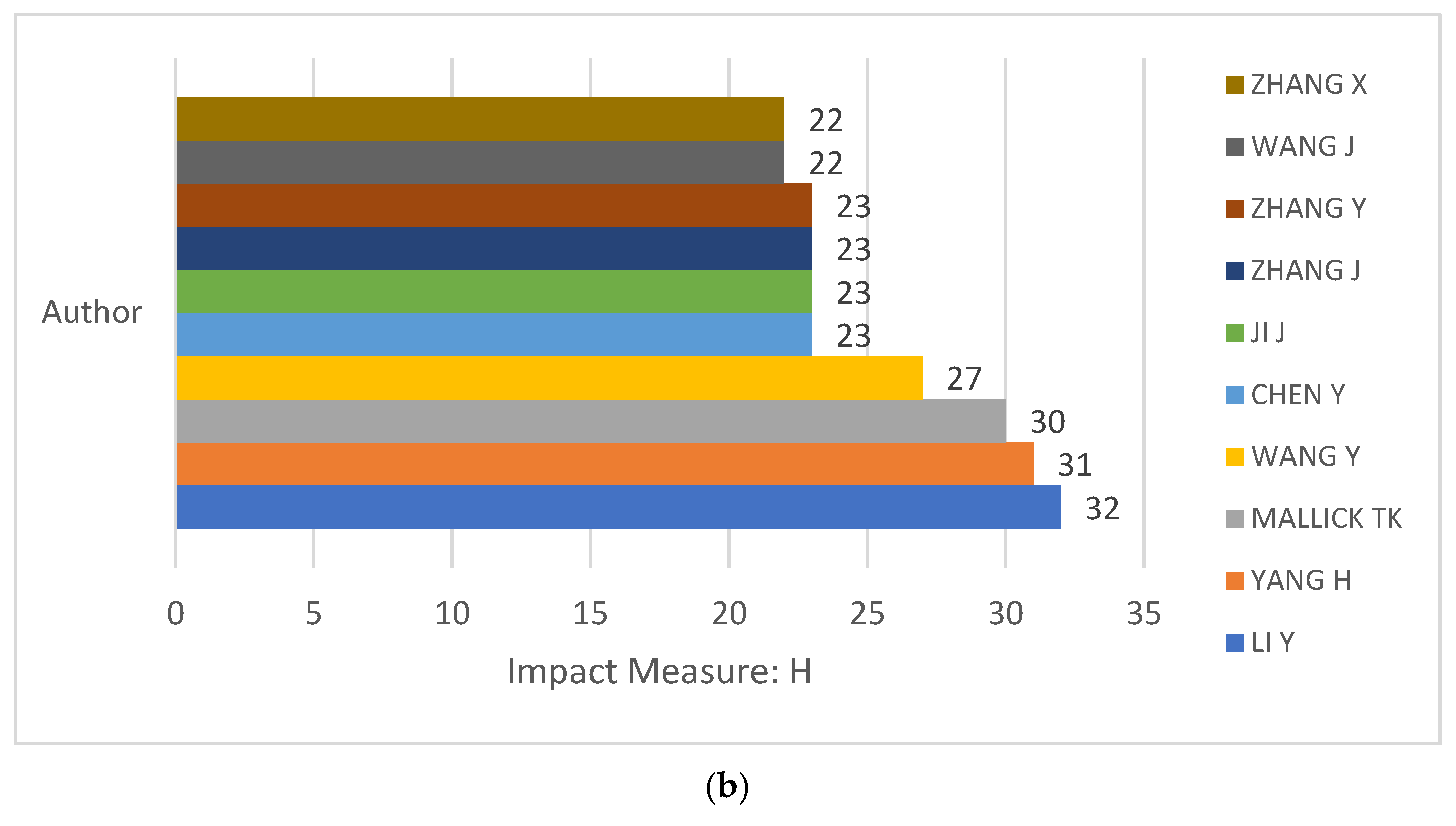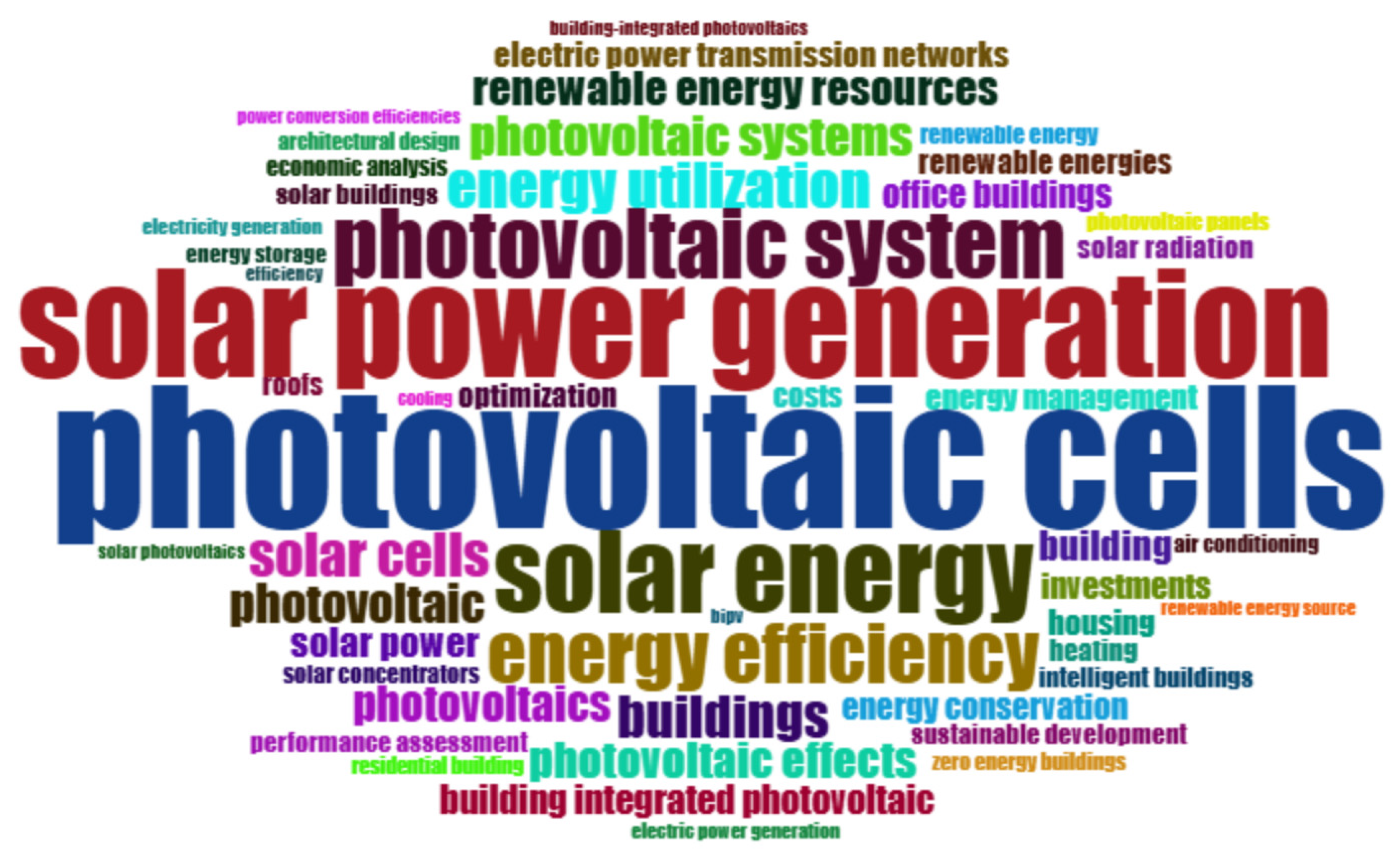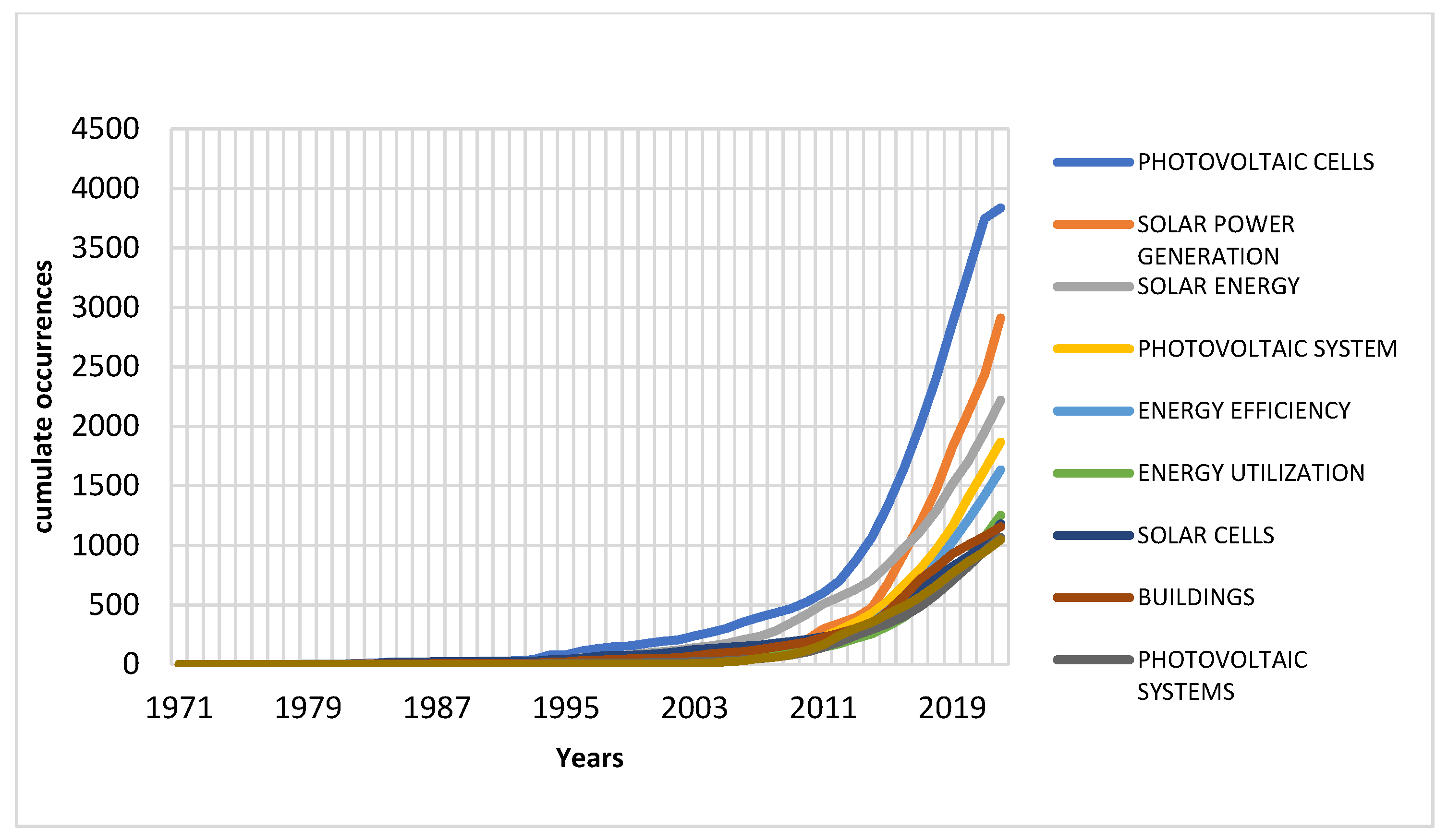1. Introduction
Building-Integrated Photovoltaics (BIPV) technology refers to photovoltaic systems that not only generate electricity but also serve as an integral component of the building envelope, such as the roof, facade, or windows [
1]. In contrast to conventional photovoltaic panels that are installed separately from the building structure, BIPV modules replace traditional building materials by combining architectural and energy functions in a single element [
2]. By integrating PV technology into building design, BIPV offers an efficient and aesthetically pleasing solution while increasing solar energy utilization in urban environments [
3].
Renewable energy has become a major focus in global strategies to reduce carbon emissions and address climate change [
4]. In this context, BIPV plays an important role as it enables the utilization of solar energy in the building sector, which accounts for about 30% of global greenhouse gas emissions [
5]. This technology supports sustainable development by locally providing clean electricity, reducing energy consumption from the grid, and minimizing the carbon footprint of buildings [
6,
7]. In addition, BIPV improves space utilization efficiency, especially in densely populated areas where land is very limited for conventional PV installations [
8]. However, widespread implementation of BIPV still faces challenges, including high initial costs, design and construction complexities, and limitations in regulations and technical standards [
9]. A better understanding of technological developments, implementation barriers, and innovation opportunities is needed in BIPV research [
10].
Globally, the use of BIPV has grown rapidly along with the increasing awareness of sustainability and the need for energy-efficient building design [
11]. Europe and Asia are leading the way in BIPV development and adoption, with many pilot projects and regulations supporting the use of this technology [
12]. Nonetheless, the rate of BIPV adoption in different countries still varies depending on local economic, regulatory, and climatic factors [
12]. Recent trends also show increasing interest in the integration of BIPV with smart grids and smart buildings, which enable real-time energy monitoring and management [
13].
This research aims to provide a comprehensive overview of developments, trends, and challenges in the field of BIPV through a bibliometric approach [
14]. Bibliometric analysis enables the identification of publication patterns, collaboration between researchers, and contributions from different institutions and countries in advancing BIPV research [
14]. This research is important because the growth of BIPV-related publications has significantly increased in recent years, reflecting the increasing attention to renewable energy innovation in the building sector [
10]. However, while research continues to grow, there are still challenges and knowledge gaps that require further attention.
One of the main objectives of this study was to identify key developments in the field of BIPV. This study not only explores popular themes, such as material innovation and architectural design, but also highlights the active involvement of various countries, such as China, the United States, and Germany, in driving the development of this technology [
10,
15]. Findings from this analysis can provide insights into significant developments and future trends in BIPV utilization, including how BIPV-related publications contribute to the understanding of energy efficiency, aesthetic integration, and economic impact [
14].
In addition, this research aims to identify knowledge gaps and challenges in BIPV implementation. Although BIPV technology offers significant potential benefits, such as reduced energy consumption and improved building aesthetics, there are various barriers that need to be overcome for wider adoption [
10,
16]. These barriers include high initial costs, lack of standardization and regulation, and limited public understanding of the benefits and maintenance of these systems [
10]. The study results show that more comprehensive performance evaluation methods are still needed, especially with regard to the environmental impact and long-term sustainability of BIPV.
Furthermore, this research will provide strategic recommendations for development and innovation in the field of BIPV. These recommendations are based on the findings regarding the challenges faced as well as the opportunities that arise from international collaboration and material innovation. Collaboration between researchers, industry, and policymakers/regulators is critical in overcoming regulatory and economic barriers, thereby accelerating the adoption of this technology [
10]. In addition, this analysis will also provide guidance and pathways for the development of policies and standards that support the application of BIPV in urban environments, especially in space-constrained areas such as city centers.
Overall, this research is expected to serve as a reference for academics, practitioners, and policymakers in developing effective strategies to accelerate BIPV adoption. By mapping existing trends and challenges and offering data-driven solutions and recommendations, this research contributes to global efforts to achieve energy sustainability and greener development.
2. Methodology
Bibliometric approaches are invaluable tools in analyzing the scientific literature, providing insights into research trends, collaboration networks, and technological advances in fields such as BIPV and microgrid systems [
17,
18]. By utilizing quantitative metrics from publications—such as number of articles, citation frequency, and author information—bibliometrics allows researchers to observe the evolution of knowledge in these fields [
14,
17]. Tools such as bibliometrix and Scopus play an important role in this analysis, allowing comprehensive visualization of author collaborations and research trends over time [
19]. These tools assist BIPV researchers in identifying influential contributors and high-impact journals, which helps define strategic research directions and identify knowledge gaps within the field.
In this study, the data used is taken from the Scopus database, which is one of the leading platforms for scientific publications and academic research. Scopus provides access to a wide range of articles, journals, and conferences covering various disciplines, including renewable energy technologies. By using the keywords “building” AND “photovoltaic” OR “BIPV” in the search, relevant results related to BIPV were obtained. BIPV is a technology that integrates solar panels into the building structure, functioning not only as an energy source but also as an architectural element. According to data from Scopus, this search yielded more than 10,000 relevant publications, indicating a growing interest in BIPV research worldwide.
Selection of the relevant literature is critical in bibliometric research to ensure accurate and up-to-date representation of BIPV developments [
20]. Key criteria include relevance, quality, impact, time span, and geographical diversity. For example, influential works such as the study [
21] on BIPV design, which has been heavily cited, emphasize the importance of citation metrics in identifying influential research. The focus on publications from 1971 to 2022, when BIPV technology was rapidly evolving, allows the analysis to accurately reflect current trends. Finally, the integration of research from different geographic regions, especially those with strong renewable energy policies (e.g., Germany, Japan, and the US), provides a more comprehensive view of BIPV challenges and implementation around the world, enriching the analysis with a global perspective.
Conducting bibliometric analysis often starts with data collection from large databases such as Scopus, which is well-known for its extensive peer-reviewed literature. For example, the bibliometric study on BIPV used Scopus datasets collected annually through Harzing’s Publish or Perish (PoP) software, which retrieves citation metrics such as total citations, number of papers, and h-index values. This raw data is then further organized in software such as Mendeley to address inaccuracies. Biblioshiny, a user-friendly interface for bibliometrix, simplifies data collection from Scopus, Web of Science, and other databases, streamlining bibliometric analysis [
19]. While using Scopus as the main database, integrating additional sources such as Web of Science and Dimensions can expand the scope of the analysis [
22,
23].
3. Key Developments in BIPV Research
This
Figure 1, summarizes key bibliometric information over the period 2017 to 2022, covering 2547 different sources with a total of 10,738 documents. The annual growth rate of document publications is 15.09%, with contributions from 25,098 authors. In particular, 626 authors have published documents written by single authors, and 22.24% of the documents involve international collaboration, with an average of 4.15 co-authors per document. The authors have used 18,553 unique keywords, and the average age of the documents is 7.89 years. Although no references are listed, each document has received an average of 19.81 citations, reflecting the impact and reach of the research published during this period.
The annual scientific production in BIPV, as shown in
Figure 2a, highlights significant trends in the field’s research activity over time. In the early years, from the 1970s to the early 2000s, the number of publications remained low, reflecting the small size of BIPV research or limited scientific and public interest. This period likely corresponded with a lack of photovoltaic technology availability and lower awareness about renewable energy solutions in buildings.
The development of BIPV research can be categorized into four different phases. The first phase in the early years (1970s to early 2000s), the annual publication rate remained low with small fluctuations, suggesting that BIPV or related research was still in its infancy or limited interest, possibly due to the limited availability of photovoltaic technology and low awareness of the need for renewable energy in buildings. The second phase is the growth phase, which began in the mid-2000s, showing a gradual increase in publications, reflecting the growing interest in BIPV in line with global initiatives to promote renewable energy, driven by increasing environmental awareness, concerns over climate change, and advances in photovoltaic technology. Post-2010 marked a phase of rapid surge (third phase), which was characterized by a sharp increase in publications, likely due to technological advances, government incentives for sustainable building, and global efforts in climate action. This surge shows that BIPV has become a central research area with increasing academic and industrial investment. In the recent high-yield phase (phase four) in the 2020s, the level of publication reached a new peak, suggesting that BIPV research is now well established with increased interest driven by innovations in materials and integration techniques. The COVID-19 pandemic may further reinforce this trend, as sustainability and resilience become key focuses in global recovery efforts.
This annual scientific production trend illustrates the maturation of BIPV research from a niche area to a prominent field within renewable energy. This growth likely reflects
Advances in photovoltaic and construction technologies enabling wider BIPV applications;
Increased environmental regulations and green building certifications promoting sustainable practices;
Greater societal and governmental emphasis on reducing carbon footprints, which has fueled research and development in sustainable construction practices.
For academic institutions, policymakers, and funding bodies, this upward trend is a positive indicator. It demonstrates the effectiveness of past investments in renewable energy research and emphasizes the ongoing need for further funding to support BIPV innovations. It also suggests a mature field where collaboration with industries and practical applications of research findings may now be more feasible, moving BIPV closer to widespread implementation. This analysis also helps identify the timeliness of addressing research gaps, particularly in enhancing BIPV efficiency, cost-effectiveness, and integration methods, as they will be crucial for the continued growth and real-world impact of BIPV.
The diagram in
Figure 2b illustrates citations per year, which shows a fluctuating citation trend from 1971 to 2021. A sharp spike in citations occurred around 1976 with an average number of 297 citations per article, or about 6.06 citations per year, and only one article. This indicates that the work became an important work that attracted great attention from all publishers. After this peak, there is a general trend of sporadic citations, with notable increases in certain years but without a clear and sustained upward trajectory.
The intermittent peaks in citation activity suggest that certain works or thematic areas garnered temporary interest or were relevant to specific periods but did not maintain long-term influence. The increase in citations from around 2004 to 2014, though still variable, indicates a period where publications may have had more consistent impact, reflecting perhaps an alignment with ongoing trends or technological advancements that kept them relevant.
Interestingly, the slight decline in citations after 2015 suggests either a shift in research focus away from earlier publications or an increased volume of newer work that may have diluted attention from past studies. This trend could signal changing priorities within the field, where newer studies may be supplanting older ones in relevance.
3.1. Sources
The diagram below (
Figure 3) shows the application of Bradford’s Law in bibliometric analysis to identify core sources in a particular research area, namely renewable energy. Based on Bradford’s Law, scholarly articles in a given topic tend to be distributed across a few key journals that contribute the most articles, followed by a larger group of journals with fewer articles, and finally an even larger group with fewer articles per journal.
In this diagram, we can see that the shaded portion of “Core Sources” is at the beginning of the curve, indicating that most articles in this field are concentrated in the top few journals, such as “Solar Energy,” “Energies,” and “Applied Energy.” This is in accordance with the principle of Bradford’s Law, where the core zone, or “Zone 1”, includes journals that produce most of the significant and relevant articles in the field.
This analysis is important for researchers and librarians, because by focusing on journals in Zone 1, they can allocate resources more efficiently. Librarians, for example, can consider subscribing to these core journals, while researchers can be directed to read and publish their work in these journals. In this way, the research process becomes more focused, and an understanding of the publishing patterns and influence of journals in the renewable energy field becomes clearer.
The diagram above (
Figure 4a) highlights the most influential sources in a particular field, showing the number of documents published by each source. “
Solar Energy” leads with 415 documents, closely followed by “
Energies” with 382 and “
Applied Energy” with 381. These top sources indicate the primary journals where research in this field is concentrated, suggesting that they hold substantial authority and influence.
This data helps researchers identify core publication venues where impactful studies are likely published. Publishing in these journals would maximize the visibility and reach of their research, given these sources’ established readership and reputation. In addition, the presence of specialized energy journals such as “Renewable Energy”, “Energy and Buildings”, and “Energy Procedia” emphasizes the field’s focus on sustainable energy solutions.
For institutions and funding bodies, this distribution can inform strategic decisions on which journals or conferences to support, aiming for maximum impact and alignment with current research trends. Additionally, observing which journals feature prominently allows for a deeper understanding of the standards, topics, and methodologies shaping the field, guiding researchers on the types of studies that are more likely to be accepted and recognized within these influential publications.
The diagram above (
Figure 4b) shows an evaluation of the local impact of various sources in the field of renewable energy using the H-index. The H-index is a metric that measures the productivity and citation impact of works published in a journal. The index is calculated based on the number of publications (N) in a journal that each receives at least N citations, thus identifying journals that have significant influence in a particular research community.
In this diagram, the journal with the highest H-index is “Applied Energy” (H = 78), followed by “Solar Energy” (H = 75) and “Energy and Buildings” (H = 68). This shows that these journals not only publish many articles but also that the articles are frequently cited, demonstrating high impact and relevance in the field of renewable energy. The higher the H-index value, the greater the local impact of the journal in this discipline, making it a key source for researchers looking for publications with high impact and relevance.
For researchers and institutions, the H-index helps in determining which journals have substantial impact in their field. It can be a guide to choosing the right publication venues and keeping up with journals with the most current research, as well as allocating library resources to subscriptions to the most influential journals. By using the H-index, institutions and libraries can ensure they remain relevant in ongoing research discussions, especially in rapidly advancing fields such as renewable energy.
3.2. Most Relevant Authors and Authors’ Local Impact
The graph displayed in
Figure 5a shows authors based on the number of documents they have published. Leading authors in a field often shape the landscape of research and innovation. For example, figures such as “LI Y” with 115 publications and “ZHANG Y” with 106 publications stand out as key contributors. Their significant publication history not only demonstrates their productivity but also positions them as authorities who tend to advance key topics in their domain, making them figures of interest to anyone studying or involved in current developments.
The substantial output of these authors reflects their academic influence and impact, as seen in
Figure 5. High publication volumes often result in sizable citation counts, a sign of intellectual recognition and influence. Examining additional metrics, such as h-index and number of citations, can provide greater insight into the depth and reach of their influence, confirming the quality and recognition of their contributions across the field.
Through their prolific contributions, these authors were instrumental in establishing and developing research themes. By studying the subjects they focus on, we can track how methodologies and ideas have evolved over time. This allows researchers to observe thematic trends and paths of innovation, as the works of these authors are often the foundation for current and future academic directions.
These leading authors are also crucial for networking and mentorship in academia. Their prominence makes them ideal mentors for new researchers, offering guidance, insight, and possible collaborations. Emerging scholars looking to specialize in a particular area can greatly benefit from relationships with established figures like them, encouraging collaborations that can lead to meaningful advances in the subfield.
Finally, the contributions of authors such as “LI Y” and “ZHANG Y” confirm their role as catalysts of scientific progress in their domains. Their prolific output and influence underscore an academic landscape where their research leaves a lasting impact, driving collective understanding and progression in their disciplines. This analysis illustrates not just the productivity of individual authors but also their broader influence within their academic community, contributing to the evolution and dissemination of knowledge.
3.3. Corresponding Authors’ Countries and Countries’ Production over Time
A comprehensive analysis of research trends over time and the corresponding author countries reveals the diverse strategies used by countries to increase their scientific influence (
Figure 6). China, for example, has experienced a remarkable increase in research output, especially after 2015, placing it as the global leader in scientific production. This growth has largely been driven by a focus on single-country publications (SCPs), which emphasize national research priorities to meet local needs and strategic goals. Despite this domestic focus, the significant volume of multiple-country publications (MCPs) from China demonstrates a commitment to international collaboration, allowing the country to expand its global research impact while strengthening its internal research ecosystem.
In contrast, the United States has maintained a stable and prominent role in research production, supported by a high number of MCPs. This trend highlights the US’ emphasis on international collaboration, utilizing global networks to increase the reach and visibility of its research. A balanced approach between SCPs and MCPs allows the US to support both domestic initiatives and international partnerships, keeping the country at the forefront of global scientific influence. This strategy allows the US to benefit from diverse perspectives and maintain its competitive edge in a rapidly evolving research landscape.
Other countries, such as the UK, Italy, and Germany, show a balanced approach in their research outputs, combining a strong number of SCPs and MCPs. This balance reflects a mixed strategy that supports both national research and cross-border collaboration. For example, the high number of MCPs from the UK and Italy demonstrates their active participation in international networks, while their SCPs emphasize a commitment to meeting local research priorities. This approach allows these countries to become influential players both locally and globally, fostering robust domestic research while benefiting from international expertise.
Emerging research economies, such as India, are also showing significant progress in the global research arena. India has shown a significant increase in publications, especially after 2010, with a strong focus on SCPs that address pressing local socio-economic challenges. However, India’s increasing number of MCPs shows that the country is progressively engaging in international collaborations, positioning itself as an increasingly important player on the global stage. Other developing countries, such as Malaysia and Brazil, are showing similar trends with growing contributions of SCPs and MCPs, which could increase their global research influence as they build capacity and develop international partnerships.
These trends indicate varying strategic priorities among countries, each utilizing a unique balance between national and international research focus to achieve their goals. Countries with a high number of MCPs, such as the United States and Italy, have strong global research networks, increasing their influence and capacity for cross-disciplinary innovation. Countries with a high number of SCPs, such as China and India, demonstrate robust internal research development that meets local priorities and builds specialized expertise. SCP-MCP-balanced countries, such as the UK and Germany, exemplify a hybrid model, harvesting the benefits of both local and global engagement.
In conclusion, the combined analysis of SCP and MCP trends along with the growth of research output offers valuable insights into the changing dynamics of global research leadership. By understanding these patterns, policymakers can make informed decisions to shape their countries’ research strategies, optimizing the balance between national development and international influence. This balanced approach not only strengthens each country’s scientific contributions but also fosters a collaborative and interconnected global research community.
4. Knowledge Gaps in BIPV Research
4.1. Word Cloud and Word Frequency over Time
The results of the analysis from Word Cloud (
Figure 7) show that publications in the field of engineering and technology are dominated by keywords such as renewable energy, optimization, IoT, machine learning, artificial intelligence, and sustainability. These words appear with high frequency, which signifies that the main focus of research in recent years has revolved around the issue of sustainable energy, the application of smart technologies, as well as the development of more efficient systems. Meanwhile, lower-frequency words still have an important role as a supporting area of research, although they are not the main focus.
When viewed from Word Frequency over Time (
Figure 8), it is clear how the frequency of use of these keywords is growing from year to year. Several words such as machine learning, deep learning, IoT, big data, and renewable energy have experienced a significant upward trend, especially in the last decade. This confirms that global research is moving towards the integration of digital technology with sustainable energy solutions. On the other hand, keywords such as optimization or control show a relatively stable trend, indicating an established and continuing field of research. On the other hand, classic terms such as analog systems or conventional power began to appear rarely, showing a shift in researchers’ interest towards new technologies. In addition, emerging words such as blockchain, smart grid, and sustainability indicate the emergence of new research fields that are expected to grow further in the future.
Overall, the combination of static analysis from word cloud and dynamic analysis from word dynamics reveals the direction of global research development. Large keywords in word cloud while also experiencing an increase in word dynamics can be seen as the main topic of the present and future, while words that decrease in frequency indicate fields that are starting to become saturated. Meanwhile, keywords that have just emerged or started out small but are now increasing into strong signals for new research topics with great potential. This confirms that the research map is in a transition phase, with the focus shifting towards sustainable energy and digital transformation, where artificial intelligence, big data, and the Internet of Things play an important role in shaping the future direction of research.
4.1.1. Efficiency Challenges
An analysis of trends in BIPV research reveals interesting insights. Keywords such as “energy efficiency” and “optimization” show consistent growth over time, reflecting a continued interest in improving the effectiveness of BIPV systems. However, this growth is relatively slower compared to terms such as “solar power generation,” which suggests that while efficiency remains important, the research focus may have broadened to encompass other aspects of the evolving technology.
In the Word Cloud visualization, terms such as “energy efficiency” and “optimization” are represented in significant, though not dominant, areas. This suggests that while these topics are important, they serve as supporting elements rather than main themes, reinforcing the main goal of efficient energy production.
The implications for ongoing research are clear: improving efficiency remains a critical goal but will require advances in materials science and adaptive technologies to overcome real-world challenges, such as shading and temperature fluctuations. For researchers, this theme remains foundational, emphasizing its importance in improving the feasibility and overall performance of BIPV systems.
4.1.2. Architectural and Aesthetic Integration
Trend analysis of BIPV research shows that terms such as “building” and “architectural design” have shown a steady frequency over time, reflecting consistent interest. However, the rate of growth is slower than that of energy-focused terms, indicating that while architectural integration remains significant, it is in a secondary position compared to the dominant theme of energy production.
In the Word Cloud visualization, the term “building” and related terms occupy a prominent space, emphasizing the continued emphasis on combining BIPV technology with building aesthetics and functionality. This integration is critical for wider adoption, especially in urban areas where visual appeal is essential for commercial and residential applications.
The implications for future research are clear: as cities and developers prioritize sustainable design, the aesthetic and architectural integration of BIPV systems is becoming increasingly relevant. Advances in thin, flexible, and visually appealing photovoltaic materials will support this trend, increasing the appeal of BIPV in the wider market.
4.1.3. Energy Storage and Management
An analysis of trends in BIPV research shows that “energy storage” has shown moderate growth, signaling a growing, though not yet dominant, interest. This trend is in line with the growing demand for energy management solutions that enable efficient use of energy, even in periods without sunlight.
In the Word Cloud visualization, terms such as “energy management” and “energy storage” occupy a smaller area, indicating that these are still emerging fields within the BIPV domain. This limited representation indicates that while energy generation remains the main focus, storage solutions are recognized as essential for the future advancement of BIPV technology.
The implications for research are significant: advances in energy storage and management are crucial to making BIPV systems more resilient and less dependent on the grid. This field is ripe for innovation, especially in the development of compact and affordable storage solutions that are well-suited for urban applications, which could significantly improve the practicality and attractiveness of BIPV systems in densely populated areas.
4.1.4. Interdisciplinary Approaches
Analysis of interdisciplinary approaches in BIPV research highlights the importance of collaboration across different fields. Trend insights show that keywords such as “architectural design,” “sustainable development,” and “energy utilization” appear consistently, reflecting the need for partnerships between engineers, architects, environmental scientists, and policymakers to develop comprehensive BIPV solutions.
In the Word Cloud visualization, the presence of diverse terms from different fields confirms the need for cross-sector cooperation, with topics such as “sustainable development” and “architectural design” illustrating the multifaceted nature of BIPV research.
The implications for BIPV development are significant: the technology has the potential to greatly benefit from an interdisciplinary approach, allowing the creation of systems that are not only technically efficient but also aligned with architectural, environmental, and societal needs. Better collaboration between disciplines can foster innovation in integration techniques, making BIPV systems more feasible and attractive for widespread adoption.
4.1.5. Cost-Efficiency and Market Viability
Trend analysis of BIPV research shows that the keyword “cost” frequently appears in the TreeMap, although it shows a slower growth rate over time. This indicates that while cost is a crucial consideration, research aimed at reducing expenditure is progressing more slowly than technological advancements.
In the Word Cloud, terms such as “cost” and “investment” stand out, highlighting the economic barriers that hinder the widespread accessibility of BIPV systems. High initial investment costs remain a substantial hurdle to market viability, limiting wider adoption.
The implications for future research and policy are clear: improving cost efficiency is key to making BIPV mainstream. Efforts should be focused on reducing production and installation costs through standardization, economies of scale, and innovative financing models. In addition, economic incentives and financial support can play an important role in accelerating the adoption of BIPV technology, making it more feasible for wider use.
5. Emerging Trends and Future Directions
BIPV research demonstrates a consistent need for interdisciplinary collaboration, highlighted by the presence of themes such as “architectural design,” “sustainable development,” and “energy utilization.” This focus underscores the importance of cooperation among engineers, architects, environmental scientists, and policymakers in creating solutions that balance aesthetics, functionality, and sustainability. Such a multifaceted approach is vital for developing comprehensive BIPV systems that meet both technological and societal demands, making them more feasible for widespread use.
In terms of efficiency and optimization, keywords like “energy efficiency” and “optimization” show stable interest, indicating ongoing efforts to improve BIPV systems’ effectiveness. However, as BIPV research matures, the focus is broadening to encompass overall system capabilities. Future research is expected to prioritize advanced materials and adaptive technologies that can optimize performance in real-world conditions, such as variations in temperature and shading. These innovations are crucial for making BIPV systems more resilient and adaptable.
Economic feasibility remains a critical concern, with terms like “costs” and “investments” frequently appearing in the research landscape, albeit with slower growth. This trend suggests that while cost remains an important factor, achieving economic viability without sacrificing performance is a persistent challenge. Research could focus on strategies such as standardization, economies of scale, and innovative financing models, which may reduce the high initial costs of BIPV systems, making them more accessible for broader markets.
Interest in energy management and storage is also emerging as a crucial aspect of BIPV’s long-term viability. While still developing, topics such as “energy storage” and “energy management” reflect an increasing recognition of their importance in maintaining resilience and grid independence. Compact and efficient storage solutions, particularly suited to urban environments, are essential for ensuring a consistent energy supply even during periods of low sunlight, enhancing the practicality of BIPV systems.
Finally, the trend of international collaboration in BIPV research is growing, with countries like the United States leading multi-country publications (MCPs), underscoring the importance of global partnerships. Emerging economies like India are also making significant contributions to BIPV, evidenced by an increase in single-country publications (SCPs) that address local challenges. These collaborations highlight BIPV’s evolution from a niche area to a mature, multidisciplinary field with a focus on practical, scalable solutions and robust international engagement.
Future research in BIPV could significantly benefit from advancements in materials and adaptive technologies to enhance energy conversion efficiency. Research focused on developing innovative materials capable of adapting to environmental factors, such as shading and temperature fluctuations, would address current efficiency limitations. For instance, breakthroughs in nanotechnology or novel material science approaches could provide solutions that improve energy yield in real-world conditions, making BIPV systems more effective and practical for diverse climates.
Aesthetic and architectural integration remains another key area for exploration. BIPV’s success in urban environments relies on seamless visual appeal, which requires developing flexible, thin-film photovoltaic materials that align with architectural styles. Collaborative research between architects and material scientists could foster the creation of designs that prioritize both functionality and visual harmony. This aesthetic focus is essential for broadening BIPV’s appeal, particularly in commercial and residential applications where appearance significantly influences adoption.
Additionally, energy storage solutions specifically designed for BIPV systems are crucial for enhancing their reliability and reducing dependency on the grid. Research in this domain could concentrate on compact, affordable, and scalable storage technologies that match the needs of densely populated urban areas. Advances in battery technology or alternative storage methods, optimized for BIPV, would help ensure energy availability during periods of low sunlight, making these systems more practical for city applications.
Reducing the cost of BIPV remains a critical area for future investigation. Efforts to lower production and installation expenses, such as through standardization and modular designs, could make BIPV more accessible. Exploring innovative financing models, including government subsidies or incentive programs, may also encourage more widespread adoption. Research focused on economic strategies could play a pivotal role in overcoming the high initial costs associated with BIPV, making it a feasible option for a broader market.
Interdisciplinary collaboration between fields such as engineering, architecture, environmental science, and public policy is essential to advancing BIPV research. Developing structured collaboration frameworks among these fields can facilitate the creation of comprehensive BIPV systems that address both technical and societal needs. This interdisciplinary approach is necessary for effectively integrating BIPV into sustainable urban planning, supporting widespread adoption while ensuring alignment with environmental and community goals.
Lastly, market analysis and policy development are important future directions to overcome economic and regulatory barriers to BIPV. Research in this area could focus on assessing the impact of incentives, policies, and market strategies that promote BIPV adoption. By identifying regulatory and economic pathways that encourage investment in sustainable energy solutions, researchers can support the development of a thriving BIPV market that aligns with global sustainability goals.
6. Conclusions
Research on BIPV has made significant progress in recent years, with key developments in the areas of interdisciplinary collaboration, efficiency, economic viability, and energy storage. The field increasingly involves architects, engineers, environmental scientists, and policymakers working together to develop BIPV systems that combine functionality, aesthetic appeal, and sustainability. However, while interest in efficiency and optimization remains strong, challenges in making BIPV economically viable and widely applicable remain. High costs, energy management issues, and limited adoption hinder the mainstream integration of BIPV.
Addressing these gaps is critical to promoting BIPV as a sustainable building solution. Efficiency challenges require further research into advanced materials and adaptive technologies that perform well in various environmental conditions. This will make BIPV systems more resilient and adaptable to diverse climates. In addition, innovations in aesthetic integration, such as flexible photovoltaic materials, will increase the appeal of BIPV in urban spaces, in line with the architectural needs of commercial and residential buildings.
The economic viability of BIPV is another significant barrier. To overcome it, research should focus on cost reduction strategies such as standardization, economies of scale, and new financing models. Affordable and accessible BIPV systems will facilitate wider adoption, especially with support from government subsidies and incentives. Meanwhile, advances in compact and efficient energy storage solutions will improve grid independence and long-term viability, especially in urban areas.
Interdisciplinary and international collaborations are also critical to addressing these gaps. Countries such as the United States and India have made progress in publishing at both single-country and multi-country levels, highlighting the potential for global partnerships to take on common challenges. An international approach can help align BIPV research with global sustainability goals, ensuring that the resulting innovations are adaptable and relevant across multiple contexts.
By addressing these key gaps, BIPV research can support the adoption and growth of the technology in sustainable building practices, transforming BIPV from a niche area to a viable and mainstream solution for energy-efficient urban development worldwide.


